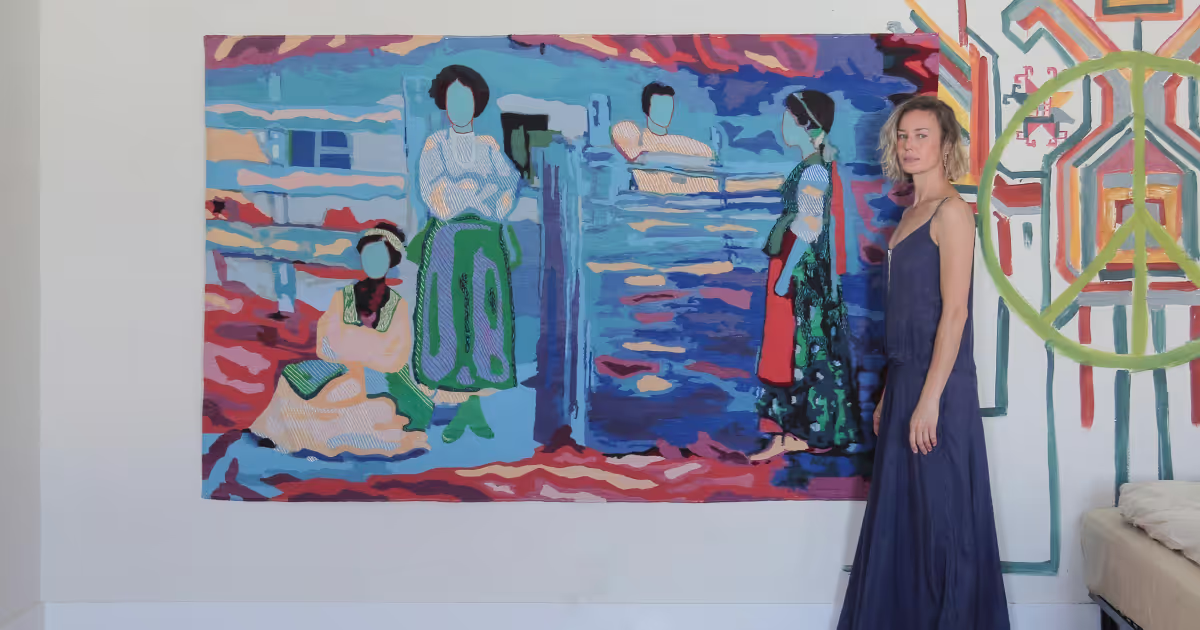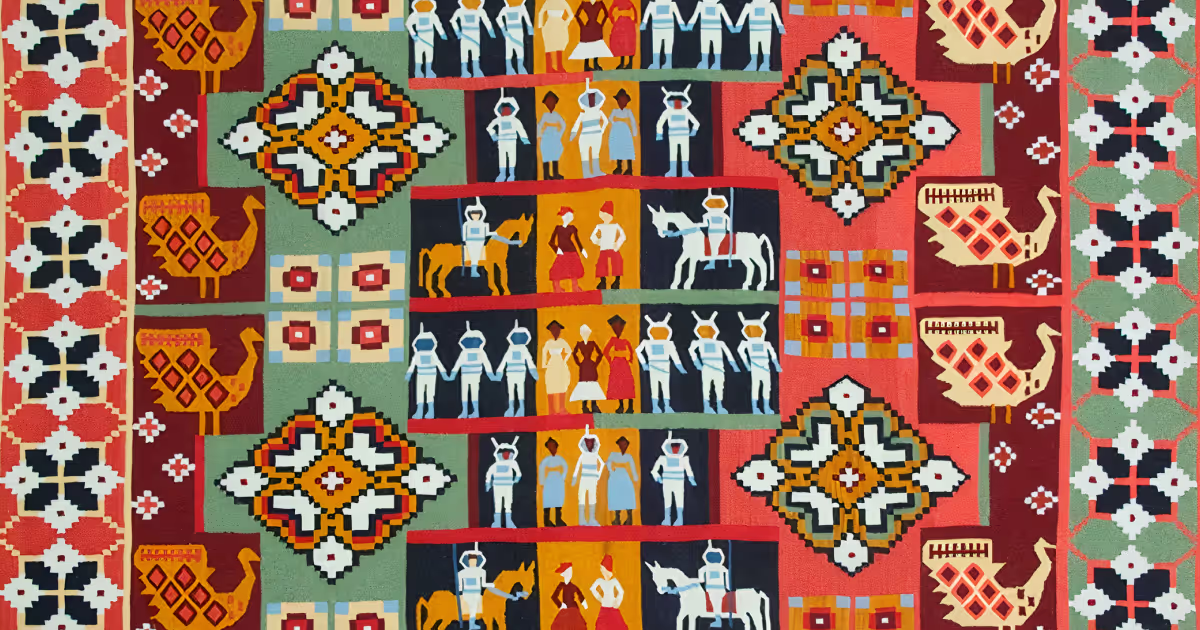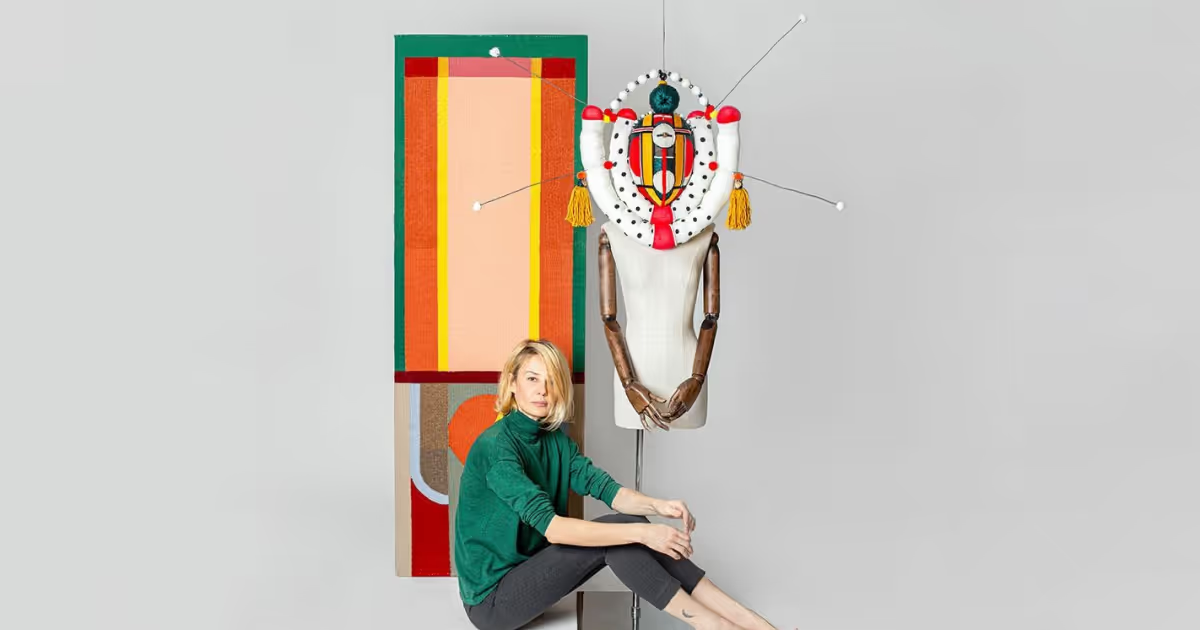In a world where more and more production processes are becoming automated and mass-produced, handmade products remain the island of uniqueness and comfort that the soul craves. Today, we have the pleasure of introducing you to Oksana Levchenya, the visionary founder and artisan behind OLK MANUFACTORY. Her brand is a testament to the art of crafting exquisite rugs, tapestries, masks, and one-of-a-kind art pieces, all meticulously hand-woven from the finest natural materials.
Oksana's artistic path is very interesting and quite unusual, as she is a medical doctor by training and even worked as a surgeon. Still, her passion for art has accompanied her since childhood and eventually led to the creation of her own brand.
Join us as we delve into a captivating conversation with Oksana Levchenya and explore the enchanting world of OLK MANUFACTORY, where mesmerizing patterns and intricate knots come to life.
1. How did it all start? What brought you from medicine to crafting?
My journey began in childhood when painting and biology were my primary passions. I was always eager to do it all and avoid choosing just one. My family was mostly in medicine, so I chose surgery as my profession, but art was always there. Becoming a mother made me realize surgery didn't align with the motherhood I desired, pushing me toward art. After eight years as an artist, I stumbled upon the craft. Being self-taught in painting and design, I created Art and Crafts. It was kind of an epiphany! While William Morris got there first, I didn't give up. I explored ways to bring my sketches to life through craft. I used embroidery on metal to create objects, like a lamp inspired by folk motanka amulets. Surprisingly, my surgical skills have come in handy during this creative journey. I've even used them to fashion a textile totem, drawing parallels to surgical techniques like anastomosis. I also still use surgical knots to tie threads.

2. Where did you learn the techniques and methods that are now used to make your brand’s products?
I started seeking out the works of old masters and discovering the institutions where they learned their craft. I reached out to a teacher at the Boychuk Institute to gain a foundation in weaving, eventually forming a team with students from the same institution. As we refined our skills, I also collaborated with skilled artisans. My fascination grew when I encountered carpets from Ukrainian museum collections. Teaming up with a historian and leading specialist at the Maksymovych Library at Taras Shevchenko National University of Kyiv, Dmytro Lukin, we revitalized folk patterns, infusing them with a contemporary twist. Occasionally, we recreated museum pieces of old carpets. This marked the initial phase. Currently, my focus is on developing my own original designs and drawings.

3. Where do you get your inspiration for creating such unique products?
I draw inspiration from contrasts and paradoxes. In 2008, I held my first exhibition titled "Social Capitalism," blending Ukrainian and Western culture through paintings. This concept juxtaposed socialist realism figures with "sacred" cows adorned with Louis Vuitton symbols. This marked my initial experimentation with weaving, as seen in a sketch from this series. In 2016, I extended this concept to carpets featuring characters from 90s computer games and Western pop icons like Yoda and Pokemon, rooted in my research into Soviet communist carpet imagery. This narrative aligns with my family's history, as my great-grandparents were imprisoned for their progressive ideals. From exploring psycho-Darwinism to blending modern gadgets with ancient tribes in the Quasi-Ethnography series, I continuously embrace paradoxes.

4. What traditional Ukrainian crafting techniques do you incorporate into your products?
Utilizing an age-old technique of vertical carpet weaving on either a hemp or cotton foundation, we've retained tradition while updating our equipment to steel structures from wood. My personal focus is on yarn dyeing, a task I predominantly undertake due to my keen sense of color and tonal nuances. This meticulous approach ensures the distinctiveness of each product. Furthermore, I incorporate distinctive methods such as anastomoses, purse stitches, and surgical knots, drawing from my background in surgery.

5. How has the war affected your business?
The war brought significant changes, impacting various aspects, including logistics. Craftsmen from the Kyiv workshop relocated, so I started to collaborate with artisans in safer regions. This made things more complicated because I had to oversee the production process (from sketch to finished product) from far away. Adapting to these changes led me to work independently, resulting in the creation of textile panels and objects. Even during power outages, I continued working with the help of a flashlight.
6. What is your brand's manifesto, and how does it align with your personal values?
OLK MANUFACTORY's manifesto underscores our commitment to the environment through crafting distinctive, enduring pieces from natural materials. We fill each piece with aesthetic and ideological significance, moving away from short-term utility. Rooted in the Ukrainian aesthetic code and ornamentation's evolution, our design highlights the nation's uniqueness, merging European aesthetics with Byzantine and local origins. This fusion, enriched by the complex history of the Soviet avant-garde and influences from prominent Ukrainian artists like Malevich, Exter, Sonia Delaunay, Boychuk, and Burlyuk, has created exceptional and versatile forms.

7. Your brand’s most iconic product (both for you as a craftsman and for your audience).
It is extremely difficult for me to single out just one work because each of them contains a piece of my soul and deep meanings. However, I am particularly proud of my latest creation, Ptaha, a monumental panel that seamlessly integrates four techniques: weaving, embroidery, ceramics, and appliqué. This work aligns perfectly with our core values: environmental mindfulness, aesthetic distinctiveness, and meaningful content. This artwork incorporates vintage homespun fabric from the mid-20th century and is entirely handcrafted.

Oksana Levchenya and her client with the Ptaha panel in the background
I also love our kylyms (hand-woven carpets), and probably one of my favorites is the Space Cossacks. I created it based on fragments of sketches of an ancient Cossack carpet. The artwork is based on my reinvention of the regional folk kylyms by giving them a modern twist. With the assistance of the historian Dmytro Lukin, who I've already mentioned before, we extracted ornaments and symbols from the regional Ukrainian carpets of the second half of the 19th century, redrew and updated them, introducing a reinterpreted character of a spaceman. Blurring the line between the past and the present, the Space Cossacks symbolize humankind that has entered a new stage of progress. The innovativeness of the plot is established on the desire to evolve and thrive in the modern life context. The carpet was woven by hand by the craftsmen of the National Center for Carpet Weaving and Embroidery, observing all the nuances of ancient technology.

OLK MANUFACTORY’s products are a great way to discover the richness of Ukrainian culture and add some coziness to your home with handmade items.
Make sure to check on OLK MANUFACTORY's wide catalog of unique pieces.
To find more ethno-inspired brands, visit spendwithukraine.com.









